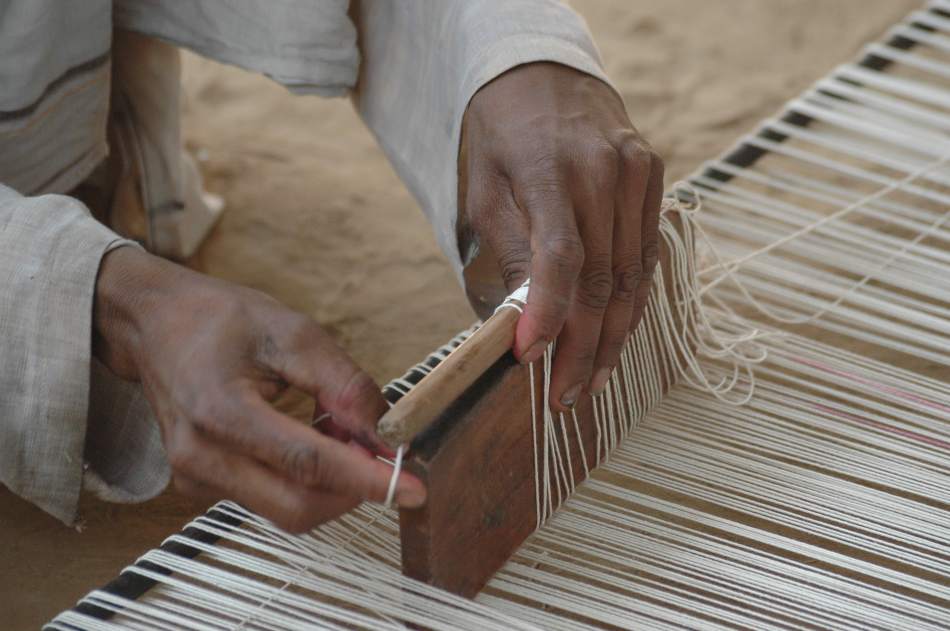Hand knotted vs hand woven: what is the difference between the two types of carpets?
Materials and techniques — Feb 03.2023
Hand knotted vs hand woven? What are the differences between the various types of luxury carpets? We discuss this in today’s article, giving all the answers to make an informed choice.
Let’s start with an observation. Hand-knotted carpets and hand-woven carpets make up the majority of models in circulation. Therefore, understanding how a carpet is made is of great help in deducing its quality and in making an informed choice, identifying the best solution for one’s furnishing project. It all stems from the differences between the two manufacturing techniques. And there are cases where it is preferable to choose one and cases where it is preferable to choose the other.
What are the characteristics of hand-knotted carpets?
Hand knotted vs hand woven? Let’s start talking about the former. Specifically, hand-knotted carpets are made entirely by hand. The yarn is knotted around the warp threads, gradually creating the pattern.
Various types of materials are used to make knotted carpets: the finest pieces are made from silk or wool, using the fleece of sheep, goats, camels, yaks or other animals. Materials of vegetable origin are also often used, such as cotton, jute, hemp and linen.
Depending on the area of production, the yarn is attached to the warp with a particular type of knot. The two most common techniques are the symmetrical knot, of Turkish origin, and the asymmetrical knot, of Persian tradition.
The density of the carpet and the number of knots per square metre are two important indicators of product quality. The greater the number of knots, in fact, the greater the density of the product and, tendentially, the better the quality of the yarn and the complexity of the design created by the craftsmen who made the carpet.
Finally, when it comes to hand-knotted carpets, it must be remembered that before the work can be said to be finished, the artefact must undergo the shaving phase. During this phase, the surface of the carpet is shaved in order to level its thickness and eliminate any irregularities.
What are the characteristics of hand-woven carpets?
Hand knotted vs hand woven? Now it is time to discuss the second type of artefact.
In hand-woven carpets, processing is done with the aid of a loom. Thanks to the support of the machine, it is possible to obtain a carpet – even a large one – in a short time and with a process that does not require any special skills.
In hand-woven carpets, the yarn is joined to the warp and the result is textiles of minimal thickness, so much so that they are often referred to as flatweave carpets.
The specific processing methods of woven carpets mean that, not infrequently, the pattern reproduced on the front and back of the piece is exactly the same. This occurs, for example, in kilim-type carpets, which are reversible. Only soumak-type carpets, although woven patterns, can only be used on one side.

Similarities and differences between hand knotted vs hand woven carpets
The first difference that needs to be considered between hand-knotted and woven carpets is the price of the product. Luxury hand-knotted carpets tend to be more expensive due to the fact that they take longer to complete, which can take months. In addition, they are made by experienced and specialised craftsmen, who charge fees commensurate with their value.
As we have already mentioned, the time it takes to make a hand-knotted carpet can be significantly different from the time it takes to make a hand-woven artefact. This is because the use of a loom for the creation of flatweave carpets significantly reduces the duration of the work. Consequently, if one needs a custom-made carpet for one’s interior design project, one must take this difference into account and, if one has a certain urgency, one should consider going for a woven carpet.
Finally, the differences in the workmanship of the carpet are also reflected in the appearance of the product. Hand-knotted carpets have the highest degree of detail. Especially when using a very fine yarn, such as high quality wool or silk, very elaborate designs can be created. The design of hand-woven carpets, on the other hand, is more basic and stylised, but can still provide a beautiful scenic effect.
Hand knotted vs hand woven: which choice to make? The decision between a hand-knotted and a hand-woven carpet depends essentially on the needs one has. For those who are looking for a luxury carpet that can become the focal point of the room, a hand-knotted carpet is preferable. Those who, on the other hand, want a carpet that primarily has a decorative function can consider hand-woven carpets.
Specifically, small flatweave carpets are also an excellent solution for those who want an original wall decoration. As they are lightweight carpets, they can easily be hung on the wall and be used to add a touch of colour to a room.
To identify which type of artefact is best for each room, the style of the furniture in the room must also be considered. Not only that: you also need to assess the qualities of the different materials that can be used.
So what? Hand knotted vs hand woven: what choice to make? For all that we have said so far, without knowing the design requirements, it is clear that we cannot say for sure whether it is better to opt for hand-knotted or hand-woven carpets.